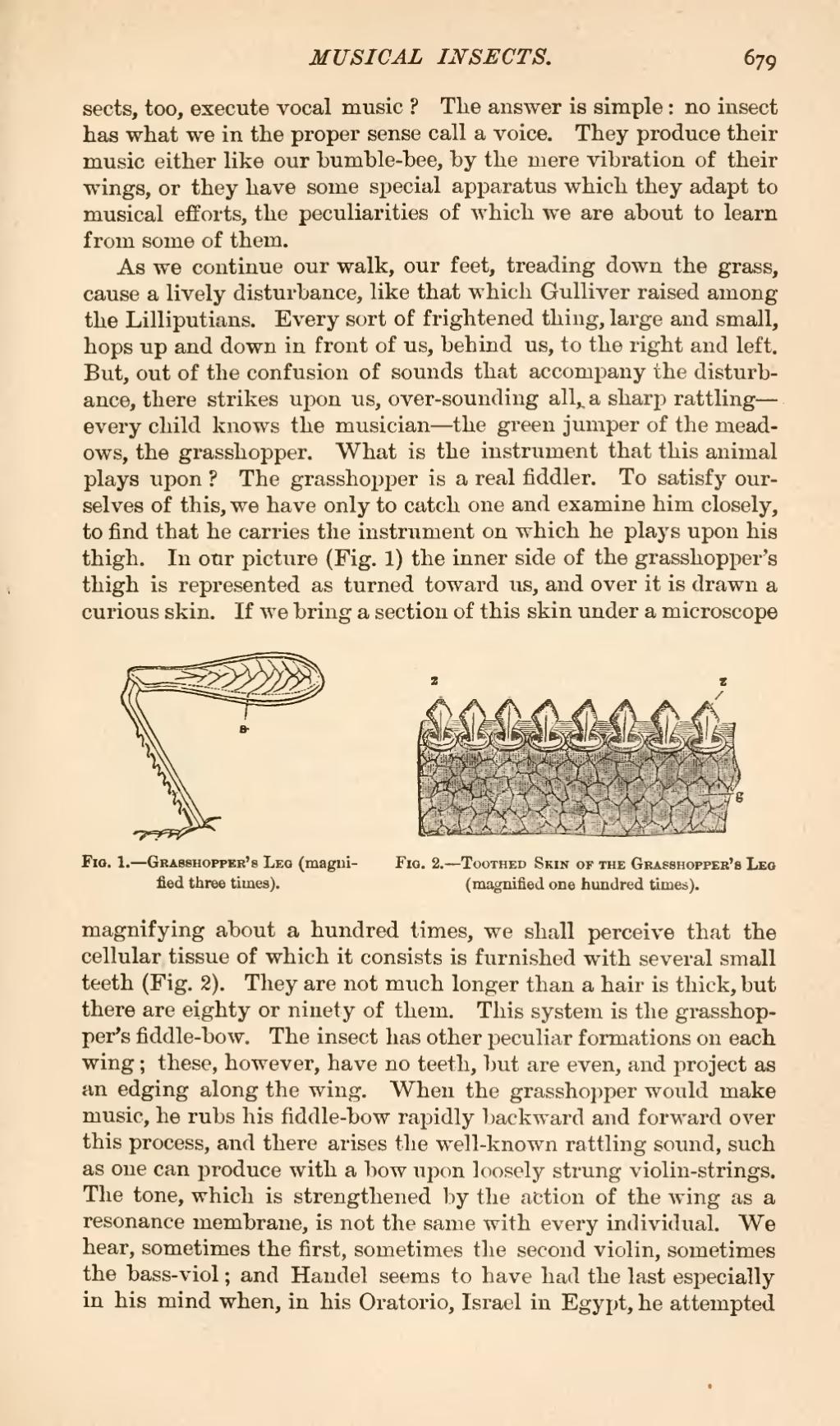sects, too, execute vocal music? The answer is simple: no insect has what we in the proper sense call a voice. They produce their music either like our bumble-bee, by the mere vibration of their wings, or they have some special apparatus which they adapt to musical efforts, the peculiarities of which we are about to learn from some of them.
As we continue our walk, our feet, treading down the grass, cause a lively disturbance, like that which Gulliver raised among the Lilliputians. Every sort of frightened thing, large and small, hops up and down in front of us, behind us, to the right and left. But, out of the confusion of sounds that accompany the disturbance, there strikes upon us, over-sounding all, a sharp rattling every child knows the musician the green jumper of the meadows, the grasshopper. What is the instrument that this animal plays upon? The grasshopper is a real fiddler. To satisfy ourselves of this, we have only to catch one and examine him closely, to find that he carries the instrument on which he plays upon his thigh. In our picture (Fig. 1) the inner side of the grasshopper's thigh is represented as turned toward us, and over it is drawn a curious skin. If we bring a section of this skin under a microscope

| Fig. 1.—Grasshopper's Leg (magnified three times). | Fig. 2.—Toothed Skin of the Grasshopper's Leg (magnified one hundred times). |
magnifying about a hundred times, we shall perceive that the cellular tissue of which it consists is furnished with several small teeth (Fig. 2). They are not much longer than a hair is thick, but there are eighty or ninety of them. This system is the grasshopper's fiddle-bow. The insect has other peculiar formations on each wing; these, however, have no teeth, but are even, and project as an edging along the wing. When the grasshopper would make music, he rubs his fiddle-bow rapidly backward and forward over this process, and there arises the well-known rattling sound, such as one can produce with a bow upon loosely strung violin-strings. The tone, which is strengthened by the action of the wing as a resonance membrane, is not the same with every individual. We hear, sometimes the first, sometimes the second violin, sometimes the bass-viol; and Handel seems to have had the last especially in his mind when, in his Oratorio, Israel in Egypt, he attempted
